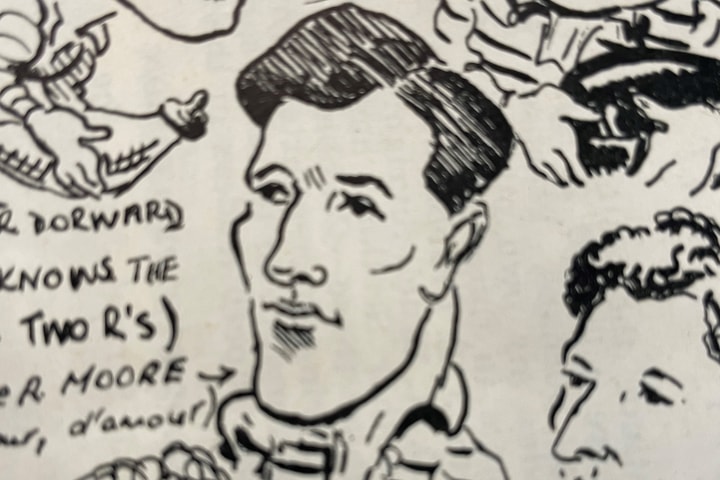A new biography of Alexander 'Nugget' Pringle has recently been published, written by his nephew Robert Greig Pringle. The following is an adapted extract...
Too big for the Primary School Reps and having to work on Saturdays when he was a teenager, Nugget Pringle played his first club rugby at the age of 22 for the Oriental Bs in 1922, one hundred years ago. Playing as a back row forward, he was speedily promoted to the As, and by the end of the season was a regular member of the Wellington Provincial reps. Weighing of the order of 14 stone and standing 6 ft 5 and a half inches, he was exceptionally tall for a man in those times. He had few equals in the lineout, tackled well and was surprisingly fast and mobile round the field.
In the following year, 1923, his rapid rise continued, as he played for North Island in the legendary inter-island 6 all draw in a quagmire, and was selected for the coming series against the visiting New South Wales (NSW) team, becoming All Black #279.
His mother kept a scrapbook of his exploits and it is on its contents that this biography is based. The rugby journalists of the day, men like 'Tackler', 'Drop-kick' and 'Katipo', wrote flowing and wonderfully descriptive prose, their grammar immaculate, alternately praising and castigating individuals, teams, selectors and administrators, often with an amusing turn of phrase. From them we learn not only of Nugget, but also a great deal about the world of rugby at the time, from the contentious 2-3-2 scrum and loose wing forward to the growing threat from rugby league.
Of Nugget 'Tackler' wrote: 'Amongst the Ories Nugget stands head and shoulders above his mates. He often looks over a telegraph pole and at times has spoken to the man in the moon. Only a lad, Pringle will go far in Rugby' (26 June '23).
Unfortunately for Nugget, Dame Fortune had other ideas.
Southern hemisphere rugby in the 1920s drew big crowds and internationals were fiercely contested and evenly matched, and made more intriguing by each of the three nations playing a different scrum formation. South Africa and the All Blacks drew home and away series at each end of the decade. The loss of manpower in the Great War leading to the disbandment of the Queensland Rugby Union meant Australia was represented by New South Wales, who nonetheless had beaten New Zealand in Christchurch in 1921 and 2-1 in Sydney in 1922. Thus in 1923 they held the 'ashes' and the New Zealand public was agog at the prospect of vengeance at home, together with selection of the team to tour the British Isles, France and Canada in 1924/5 - the team that would become renowned as the Invincibles.
Against New South Wales Nugget missed the first test with a cauliflower ear but played in the second, scoring a try in what was a resounding victory. The 'ashes' won, however, the selectors, with the Northern tour in mind, picked a completely new squad for the third test.
Despite 'Tackler's prediction, fate decreed that this was to be 'Nugget's only All Black appearance.








